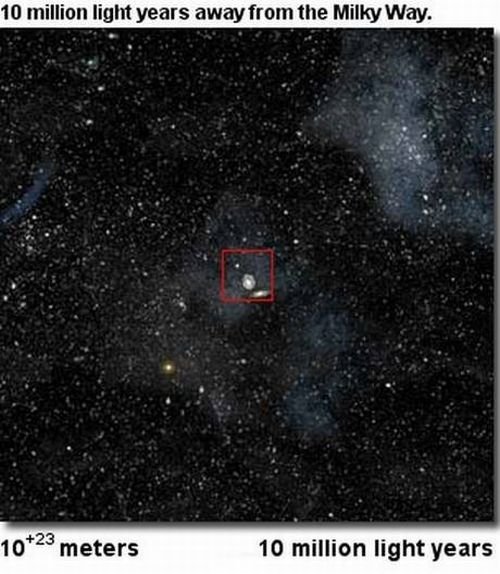|
|
Our Universe Scale
|
According to a still-more-restrictive definition, the universe is everything within our connected space-time that could have a chance to interact with us and vice versa. According to the general theory of relativity, some regions of space may never interact with ours even in the lifetime of the universe, due to the finite speed of light and the ongoing expansion of space. For example, radio messages sent from Earth may never reach some regions of space, even if the universe would live forever; space may expand faster than light can traverse it. It is worth emphasizing that those distant regions of space are taken to exist and be part of reality as much as we are; yet we can never interact with them. The spatial region within which we can affect and be affected is denoted as the observable universe. Strictly speaking, the observable universe depends on the location of the observer. By traveling, an observer can come into contact with a greater region of space-time than an observer who remains still, so that the observable universe for the former is larger than for the latter. Nevertheless, even the most rapid traveler will not be able to interact with all of space. Typically, the observable universe is taken to mean the universe observable from our vantage point in the Milky Way Galaxy.
Size, age, contents, structure, and laws
The universe is immensely large and possibly infinite in volume. The region visible from Earth (the observable universe) is a sphere with a radius of about 46 billion light years, based on where the expansion of space has taken the most distant objects observed. For comparison, the diameter of a typical galaxy is only 30,000 light-years, and the typical distance between two neighboring galaxies is only 3 million light-years. As an example, our Milky Way Galaxy is roughly 100,000 light years in diameter, and our nearest sister galaxy, the Andromeda Galaxy, is located roughly 2.5 million light years away. There are probably more than 100 billion (1011) galaxies in the observable universe. Typical galaxies range from dwarfs with as few as ten million (107) stars up to giants with one trillion (1012) stars, all orbiting the galaxy's center of mass. A 2010 study by astronomers estimated that the observable universe contains 300 sextillion (3×1023) stars.
|
|









